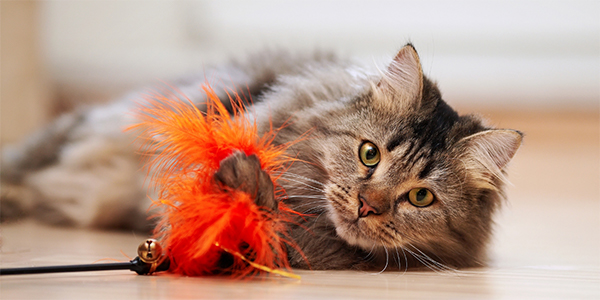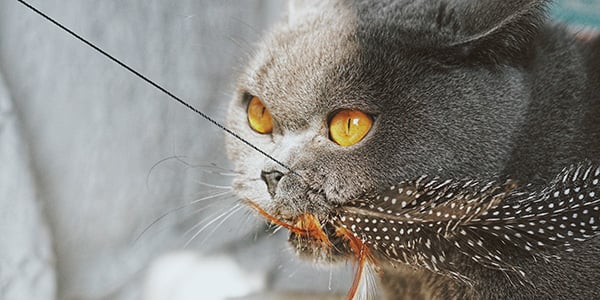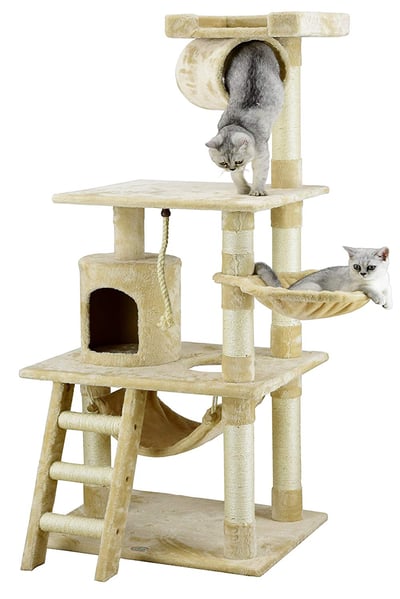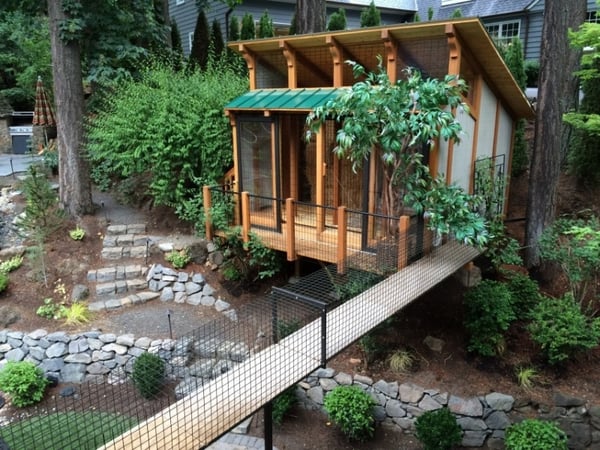 Many pet owners don’t realize that cats need socialization and stimulation.
Many pet owners don’t realize that cats need socialization and stimulation.
Cats are characterized as “independent” or “self-reliant” and some people actually choose to bring them into their home because they are considered less “high-maintenance” than dogs.
The truth is that cats do have these needs and providing an environment that addresses these needs is important. Cats still have all the characteristics that allow them to live a feral, undomesticated lifestyle, but think about the difference their “natural” environment looks like versus a home environment.
You have to address socialization and stimulation in the home in order for the cat to live a full, happy life.
Click Here for DIY Cat Enrichment Ideas and Our Top Picks for Enrichment Toys
Cat Socialization
Due to the lifestyle many cat owners lead, some cats tend to spend a lot of time alone, which may not be great for every cat.
Cats actually are highly social animals; they just present themselves differently than other pets. Some need their socialization focused on play, some on food, and others on interactions with their humans.
 Some cats may even want to wear a harness and leash and go for neighborhood walks! Remember to give your cat as much attention as he needs to avoid future behavioral issues related to separation anxiety or loneliness.
Some cats may even want to wear a harness and leash and go for neighborhood walks! Remember to give your cat as much attention as he needs to avoid future behavioral issues related to separation anxiety or loneliness.
Environmental Enrichment Basics:
- You have to address socialization and stimulation in the home in order for the cat to live a full, happy life.
- Cats need the opportunity to engage their prey instincts in an environment that reflects their wild side.
- It’s important to figure out what works best for your cat’s unique personality, and expanding on that.
Cat Stimulation
Cats need the opportunity to engage their prey instincts in an environment that reflects their wild side.
Some cats have very strong prey instincts and some are weak, but all cats need at least some outlet for this type of play.
Some of the ways you can provide your cat with these opportunities include the following:
- Toys: Jingle balls, stuffed mice, and feather toys will all provide opportunities for stalking and pouncing. If you’d like to try making some cat toys of your own at home, check out these 5 DIY cat toys made from a toilet paper roll.
And if you have the time to build something on a larger scale, check our blog on how to build a cat condo with boxes! - Active play sessions: Take some time to play with your cat. The interaction with you will add to the stimulation and it will provide you with bonding opportunities as well.
 Check out this video of PV kitty, Mazel, enjoying some play time with his favorite wand toy.
Check out this video of PV kitty, Mazel, enjoying some play time with his favorite wand toy.
- Foraging: Hide small amounts of food throughout the house so your cat can explore their environment to find their dinner. You can also test out different treat-dispensing toys where your cat has to figure out a puzzle to find their treat.
- Climbing trees: Elevated resting places provide an opportunity for cats to climb and hide as they would in an outdoor environment. Here is a really nice cat tree with multiple levels and hidey-holes to enjoy!

- A complex, three-dimensional environment: Provide intentional hiding spots for your cat to explore, like behind the sofa or under the bed.
- Safe outdoor areas for play: Cat owners with highly social cats may want to consider an enclosed outdoor area for cats to explore.
Your area doesn't have to be this elaborate, but for inspiration, check out these eight spectacular catios!
Test out different methods to figure out what is right for your specific cat. Be creative in providing enrichment, while maintaining safety and not taking unnecessary risks.
While it’s not a one-size-fits-all strategy, it’s important to figure out what works best for your cat’s unique personality and expand on that. The result is a happy, well-rounded and mentally and physically stimulated cat that will be a good housemate for years to come.
Please share your cat's experiences
The information you share will help many other cats.
It's anonymous and will take 1- 2 minutes.
Thank you!





